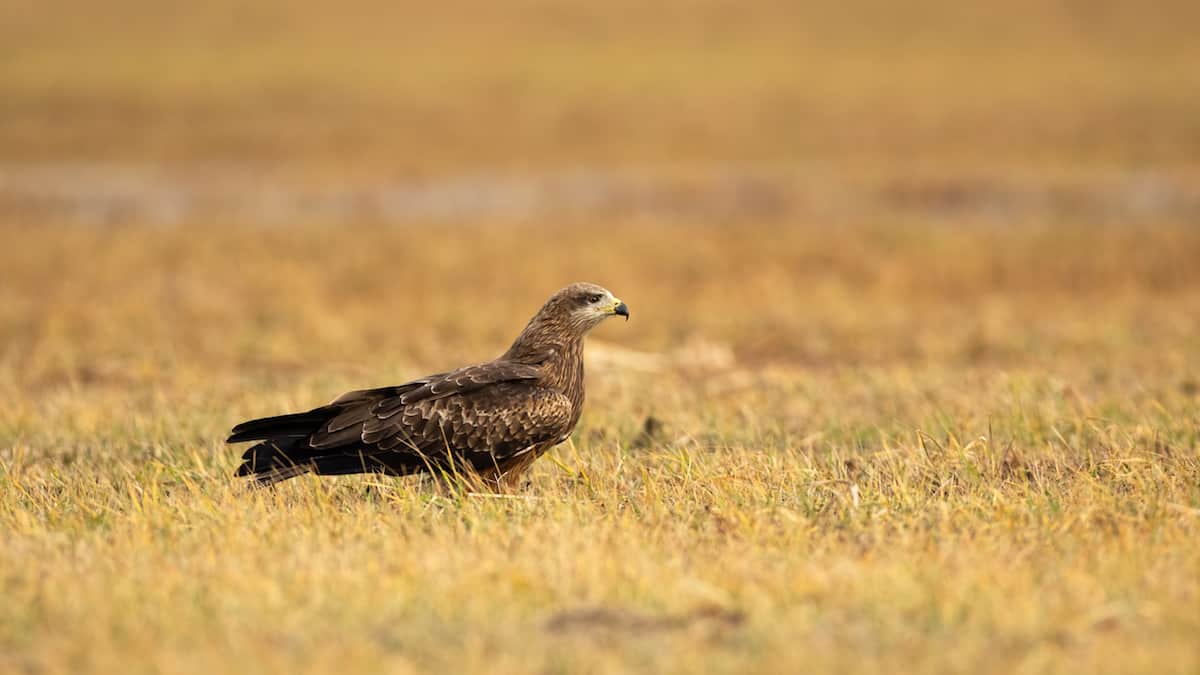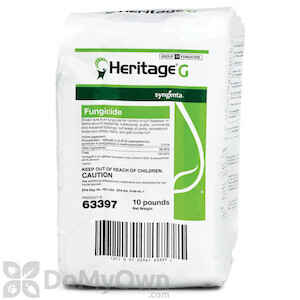What Causes Fescue To Turn Yellow?
Fescue is a popular type of turfgrass to use for lawns, due in large part to its beautiful green color. The grass can be grown in a wide variety of climates and soils. However, every so often the fescue will turn yellow.
So, why is my fescue grass turning yellow? There are several reasons that the fescue grass may turn yellow. One main reason fescue turns yellow is fungus. There are others and we will go over those in the article along with the causes of each one.
Some grasses may yellow in the early stages of growth, even if they are new sod. Yellowing can also occur throughout the year and during seasons when temperatures drop below freezing. The reasons for this can be complex and weather-related. Your dog may pee on the grass, which turns it into patches in other situations.
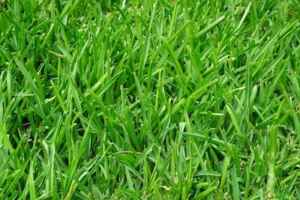 Reasons Why Your Grass Is Turning Yellow
Reasons Why Your Grass Is Turning Yellow
There are several common reasons your fescue grass could turn yellow.
Fungal Diseases
With fescue grass, one of the main causes for it turning yellow is fescue grass turning brown or dead because of a fungus called endophytic blight. Other disease names that are related to this situation are rust, flavescent doree, and verticillium wilt.
They can be caused by fungal diseases in warm weather conditions. In colder weather, they can stem from a plant’s roots being taken over by the fungus. The fungi enter the grass through insect bites, which you will see because of ants that are moving around in your yard.
Fungus is directly linked with how much rainfall and soil moisture exists surrounding the turf. Fungi are known to grow more quickly on wet grass blades, which is why yellowing may happen during or after rain periods.
Stressors Caused By Heat And Drought
Another reason behind fescue grass turning yellow is a lack of water, whether it’s a drought or heat waves. Either one can cause the grass to turn yellow and thrive in dry conditions more so than wet ones.
Fescue thrives in cooler weather. It generally grows during the spring, fall, or winter seasons. When the grass is stressed out because of heatwaves or drought conditions, the growth stages are halted and it will begin to turn yellow.
If you want your fescue green again, several solutions can alleviate the situation. You can water more often or deep into the soil, install a sprinkler system, or put down a drought-tolerant grass seed mix.
Iron And Manganese Deficiency
A lack of iron and manganese can also cause fescue to turn yellow. The grass may start to take on a straw color and the tips of the blades will die.
The leaves will curl and the blades will be thin. You’ll also see that the roots of the grass are not as healthy as they should be.
This deficiency is caused by a lack of essential minerals in the soil. You can add fertilizers that have iron or manganese to your lawn, or use compost to increase the levels of those minerals.
Dog Urine
If your dog is peeing on the grass, that can also turn it yellow. The yellow patches will be in direct contrast to the green lawn.
You’ll see this happening more often when the grass is wet. Dog urine contains high levels of nitrogen and ammonia, which are two elements that kill the grass. Again keeping your grass watered regularly will help to dilute the urine and keep the grass a healthy green color.
Over-Fertilization
A common mistake that is made with lawns is over-fertilizing. When you do this, you are providing more nutrients than the grass needs and it will start to turn yellow.
This is because the grass can’t process the nutrients. You’ll see your grass growing slower and you will have a harder time keeping it green. Stop fertilizing your lawn for a while to let the soil rest and then you should be able to resume the process again.
Spring and early summer should be the only times for fertilizing fescue. You should stop after July or August to avoid yellow patches from appearing on your lawn.
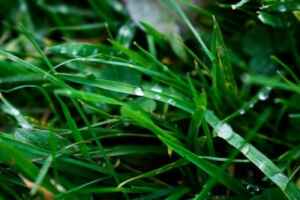 Too Much Water
Too Much Water
If you’re watering your lawn too much, that can also lead to the grass turning yellow. When the soil is constantly wet, it can cause a fungus to grow and the roots of the grass will rot.
You’ll see this happening more often in shady areas of your yard. A lawn only needs about an inch of water per week, so make sure to check the weather and adjust your watering schedule accordingly.
You can also add a sprinkler system or drip irrigation to your lawn so that water is more evenly distributed.
How Do I fix My Yellowing Grass?
It’s easy to believe that grass illnesses or a lack of fertilizer are to blame for your lawn turning yellow, but any of the above factors can be the cause. The first thing you need to do is to determine the source of the problem.
Have you fertilized recently? Is the amount of water you’re applying correctly? These questions and more should be addressed to apply the appropriate remedy.
Flush Out Excess Fertilizer
Fertilizer burn starts to appear when grass blades turn yellow with the lawn appearing to have crusts of synthetic fertilizer. To fix the problem, flush out the excess salts past the root zone.
How Is This Done?
The grass needs at least 1 inch of water per day for about a week to fully cleanse the lawn. The water forces out excess salts and forces them to leach into the soil beyond the root zone. Start this treatment as soon as you see your grass starting to turn yellow or brown.
Soaking the lawn with a generous amount of water for a week. The process will help revive the grass and turn the lawn green again. It is possible to save a lawn that’s dying from fertilizer burn if you start the treatment early enough.
Remove Dog Urine Spots
If your dog is peeing on the grass, that can also turn it yellow. The yellow patches will be in direct contrast to the green lawn. You’ll see this happening more often when the grass is wet.
Again keeping your lawn watered regularly will help to dilute the urine and keep the grass a healthy green color.
Hot Weather And Drought
If you’re experiencing periods of hot weather, that can also lead to your lawn turning yellow. During summertime, the grass goes dormant and turns brown.
You’ll need about an inch of water per week during this period. You can use drip irrigation or sprinklers to keep the soil watered.
If you don’t see any signs of green growth after a few weeks, then the grass is likely dead and you will need to re-sod the area.
Fungus
Fungal diseases may also cause yellowing and graying of grass blades at the base of the shoots. Apply a lawn fungicide to turn yellow grass green. It will cure most fungal diseases that cause leaf discoloration and root rot.
If the fungal infection hasn’t spread to a point of no return, then it can be cured. You’ll need to apply a fungicide every 2 weeks until the fungus disappears. After the fungus is gone, then you can back off to a monthly application.
Water can be a friend or an enemy when it comes to getting rid of fungus from your Fescue lawn. Watering in moderation will remove fungus spores and promote new healthy grass growth. But, if you overwater the lawn, then the fungus can thrive.
Iron Supplement Application
Iron deficiency in your lawn will also turn it yellow. The symptoms of iron deficiency are usually seen at the base of each blade of grass. When you look closely, the blades will appear thin and beige or light brown.
Soaking your lawn with an iron-based product once a year can help restore the green color to your lawn. If you’re not sure if your lawn has an iron deficiency, then a soil test can help to determine that. Iron-rich fertilizer, such as Milorganite, should be applied after addressing the soil pH deficiency.
You’ll need to send a soil sample to your local county extension office or university faculty that can perform the test. Iron deficiencies are very common in Fescue grasses, but they’re easy to spot and cure.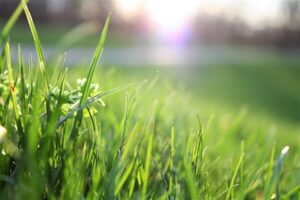
Do Not Forget Too Much Fertilizer
Do not use excessive amounts of fertilizer on your lawn. Too much nitrogen will cause the grass to grow excessively and turn yellow.
Water the lawn after fertilizing for best absorption.
Apply a balanced fertilizer like 16-16-16 or 19-19-19 (with no more than 3% phosphorous and again only using an amount that’s recommended for your Fescue type) twice a year in the spring and fall. A lawn that’s healthy and receiving the right nutrients should not turn yellow.
If you’re using too much fertilizer, then you will need to cut back on the amount that you’re using. A thick and lush lawn is the goal for every homeowner, but sometimes we can get a little too excited about growing grass and we overdo it.
Remember
There are many reasons why your Fescue grass might turn yellow, but some of the most common causes are overwatering, under watering, fertilizer burn, dog urine spots, hot weather, drought, fungus, and iron deficiency. If you have any questions about why your Fescue grass is turning yellow, please contact a lawn care specialist for assistance.

